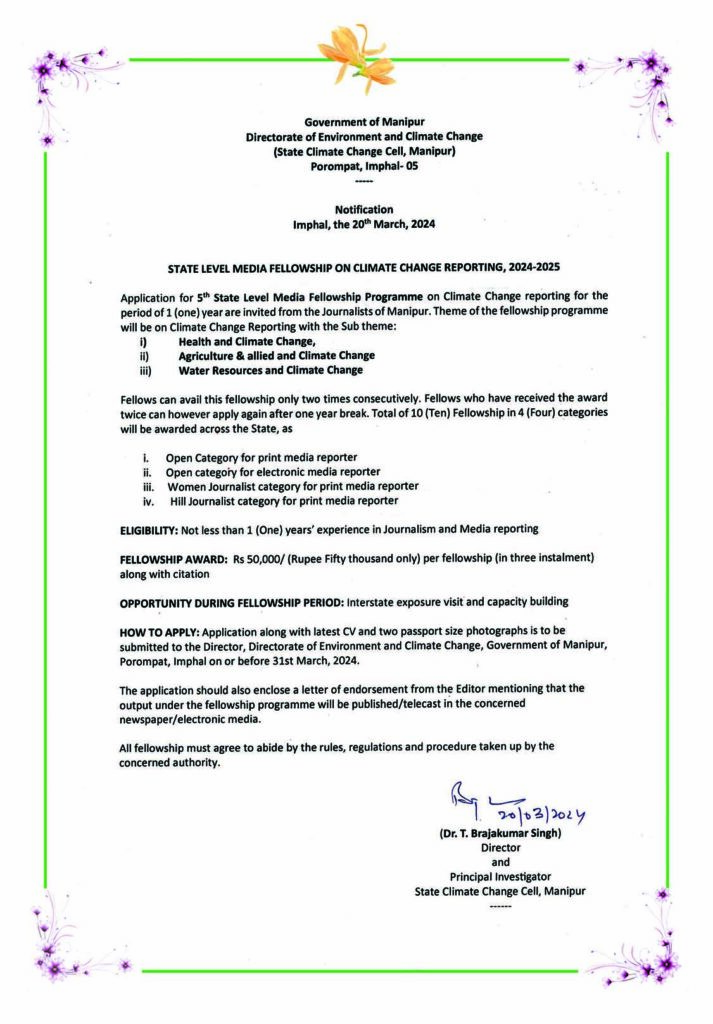The friction over the idea of regional autonomy within Manipur cannot and should not be allowed to fester anymore, and a realistic autonomy model conceived of and adapted by consensus. It must be a model which does not put any of the different regions of the state under any disadvantage for doing so can never ensure harmony and trouble can be expected to surface sooner than later no matter what the deal or new law made in the regard. In this, the differences in development between the hills and valley must be first studied more closely to determine what exactly have been the causes and what are the best remedies. Perhaps it would be good to engage an outside agency to conduct such a study, considering the level of distrust between these two regions at this moment. First objective of this exercise should be to find out how wide this disparity is in real economic terms. How widespread poverty is in the two regions and how they compare. The second would be to find out how much of this disparity is on account of policy motivation weighted towards the valley as is often the charge from the hills. The third goal should be to find out if on the other hand this unequal development is also on account of the hill community’s unwillingness to adopt and join the modern economic paradigms, the most important of which is land reforms, as is often the counter charge from the valley. The last, but very important point should be to determine how much of this disparity is predetermined by geography. Probably there is a bit of all these. The second and third should not be difficult to correct, for once the data are available there should be ways to look for remedies to fill the lacunae. If on the other hand the data demonstrate the perceptions have no basis, these perceptions should die their natural death without the need for policy intervention. The fourth, that of geography as determinant, which is a given and cannot be altered by perspective readjustment, would have to be tackled at a different level altogether.
Since problems of perspectives can have easier remedies, and problems of geography is more intractable, it would be pertinent to go into the latter in a little more depth. We are taking cognizance of it now, but imperial powers of the colonial era whose successes depended on their understanding of geostrategy have written volumes on it beginning at least a century ago. Of relevance is Halford Mackinder’s 1904 book written during the heat of the Great Game “The Geographical Pivot of History” in which he talks about the differences in the inherent sense of security and identity between “heartland” and “rimland” nations. He notes that heartland nations necessarily would have to have artificial boundaries therefore very prone to frictions with neighbours. Rimland nations on the other hand have boundaries defined unambiguously by nature. Hence, the national boundary of a country like Japan for instance can never be in doubt, but even this is changing with modern nations now claiming sovereignty over even seas. In more recent times, Robert Kaplan takes Mackinder’s argument further in his acclaimed 2012 book “The Revenge of Geography: What the Map Tells Us About Coming Conflicts and the Battle Against Fate”. More significantly, in “Art of Being Not Being Governed: An Anarchic History of Upland South East Asia”, a book which most of us would be familiar with, James Scott writes of a pattern of evolution of valley States nudged by surplus paddy production, and State-evading hills that surround them, and the peculiar dynamic that determine their relations in the upland SE Asian region which Dutch scholar, Willem Schendel, popularised as Zomia.
In Manipur too, there is a great deal of Scott’s “State evasion” phenomenon by the hill population, but when left behind in statutory benefits because of this, discontents result. One example will suffice to illustrate this contradiction. Hill communities vehemently oppose State takeover of forests in their vicinities. This is so even in joint forest management arrangements with the communities. The problem is, the Indian Forest Act of 1927, still in vogue, has no provision for government investing funds in forests the government is not in charge of. There are only two ways forward in this situation. One is for the hill communities to conform to the standards set by the Indian Forest Act, and the other is for the Indian Forest Act to be amended to allow government forest departments to invest in forests the governments do not have any direct say in. As to which is more feasible is for the stakeholders to assess for themselves, but till this internal contradiction is resolved, blame games are at best diversions from the real issue to work up emotions in ways that can benefit electoral prospects of interested parties. The collateral damage is also in the shape of soured inter community relations, and this is very costly to say the least. It must however be said there are some innovative approaches in forest management now being experimented to overcome this problem. These include an Indo-German project for regreening watershed areas in the Eastern Himalayas in which communities are left to manage the forests in ways that suit them, with only broad supervision by the relevant State Forest Departments and independent consultants engaged by the German government. The Manipur segment of this project is christened COSFOM, unfortunately is currently running into stifling hurdles put up by corrupt officials in the bureaucracy.
Whatever is the justification or history behind the issue of hill-valley dichotomy, the fact is, the mistrust between the two has been worked up to an explosive point in the present time. The familiar pattern has been for the hills to demand for more autonomy by incorporating features from the 6th Schedule of the Constitution to the autonomy already guaranteed under the present Autonomous District Council mandated by Article 371-C, and in knee-jerk responses, for the valley to oppose such moves, not in any envy of likely extra benefits the hills would reap, but in a phobia that this may lead to the dismantling of the idea of a united Manipur based on their nostalgia of an antiquated past they hold dear, therefore consider inviolable. Well, the valley must realise that history is not a static phenomenon and must accommodate the changing reality and needs thrown up by the changed reality from time to time, and the hills too must come to terms that autonomy cannot be exclusive and the valley too must have it as well. As I have written about earlier, the effort now must be to visualise a mutually autonomous hill and valley regions, with perhaps the cosmopolitan Imphal municipal area, constituting mainly of the commercial hub of Imphal West and a smaller part of Imphal East, left as it is now, untouched by the administrative arrangements of the two proposed autonomous regions.
Meiteis are not in the Scheduled Tribes list, though there is now a demand for their inclusion by a section among them. However, an autonomy arrangement can still be made for them even without being STs. The Gorkhaland Council in Darjeeling is already a precedent therefore Constitutionally approved and accepted. Gorkhaland is also based on the 6th Schedule, though like all later day autonomous regions, they differ from the originally conceived 6th Schedule ADCs in that they come with “local adjustments”, and sensibly too. It may be recalled here that in 2010, Manipur government too had almost come to adopting the 6th Schedule model ADCs for the hills, but after making “local adjustments”. Unfortunately, contests over the territorial extents of the ADCs, in particular the matter of inclusion of the then Sadar Hills as a separate 6th Schedule ADC, as well as objections to the clause of “local adjustments”, caused this half-hearted initiative to be aborted. It may also be recalled, the original territories which came under the 6th Schedule constituted of the hill districts of the then undivided Assam which were beyond the Inner Line of 1873, all of which are now no longer with Assam and are full-fledged States. Of these former districts of Assam, Nagaland was the only one to refuse the 6th Schedule as its radical leadership then would settle for nothing less than sovereignty. The rest is, as they say, history.
The foremost need is for Manipur to rework this depressing relationship of distrust between its hills and valley, and if a federation of mutually autonomous regions is what is deemed the solution, this must be given a serious thought. The trouble can be, autonomy of the 6th Schedule model is meant for mono-cultural, mono-ethnic and therefore mono-tradition units. It is meant among others, to give some space for putting into practice customary laws of different ethnic groups. The foreseeable problematic question that may arise is, whose customary law to be made vogue. If this does not work out for whatever the reason, then maybe the resort should be to think in terms of asymmetric investment, based on needs rather than arithmetic proportionality. The habitation pattern in Manipur and indeed most of the Northeast being what it is, per capita investment can never bring equitable justice.










